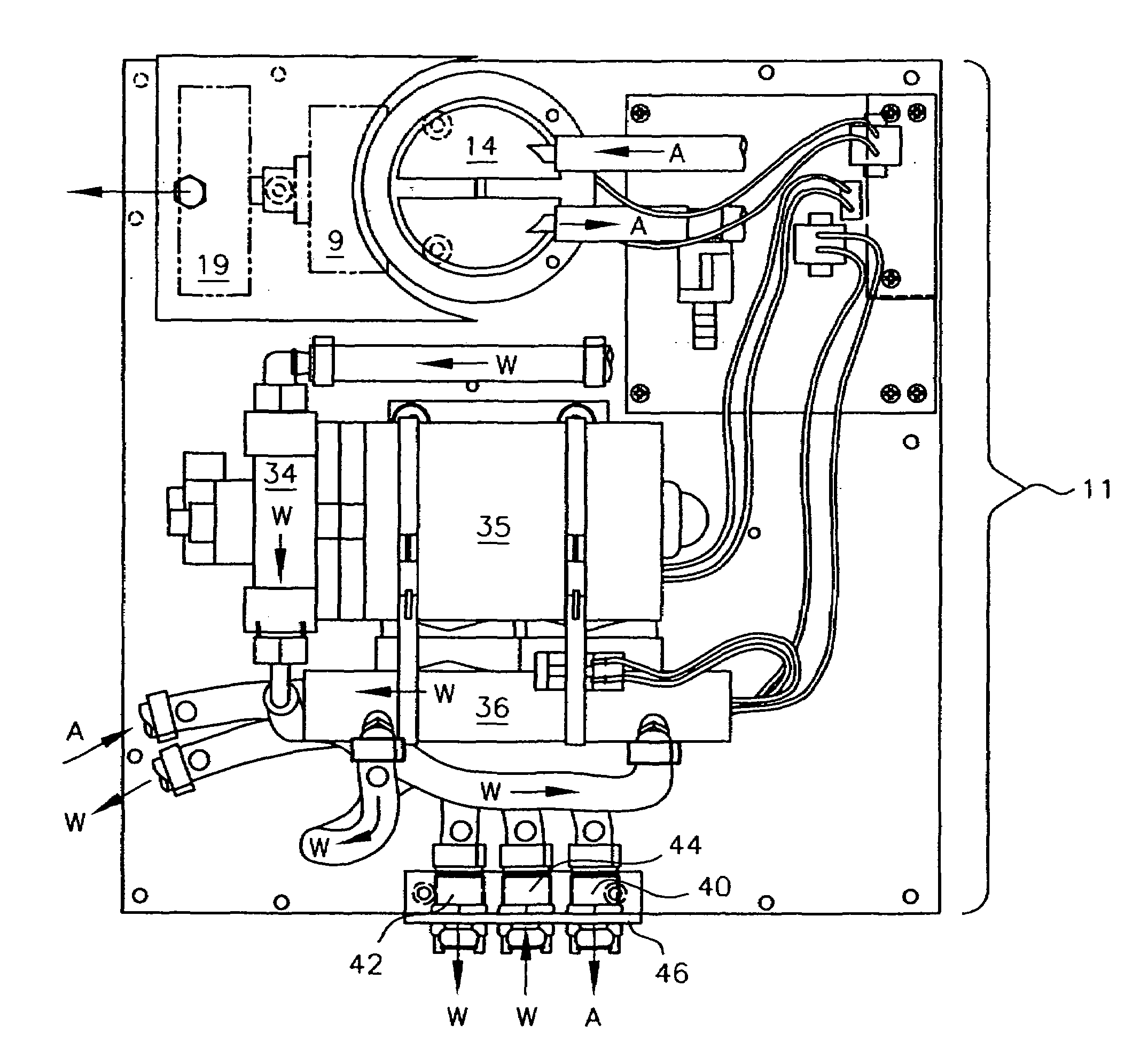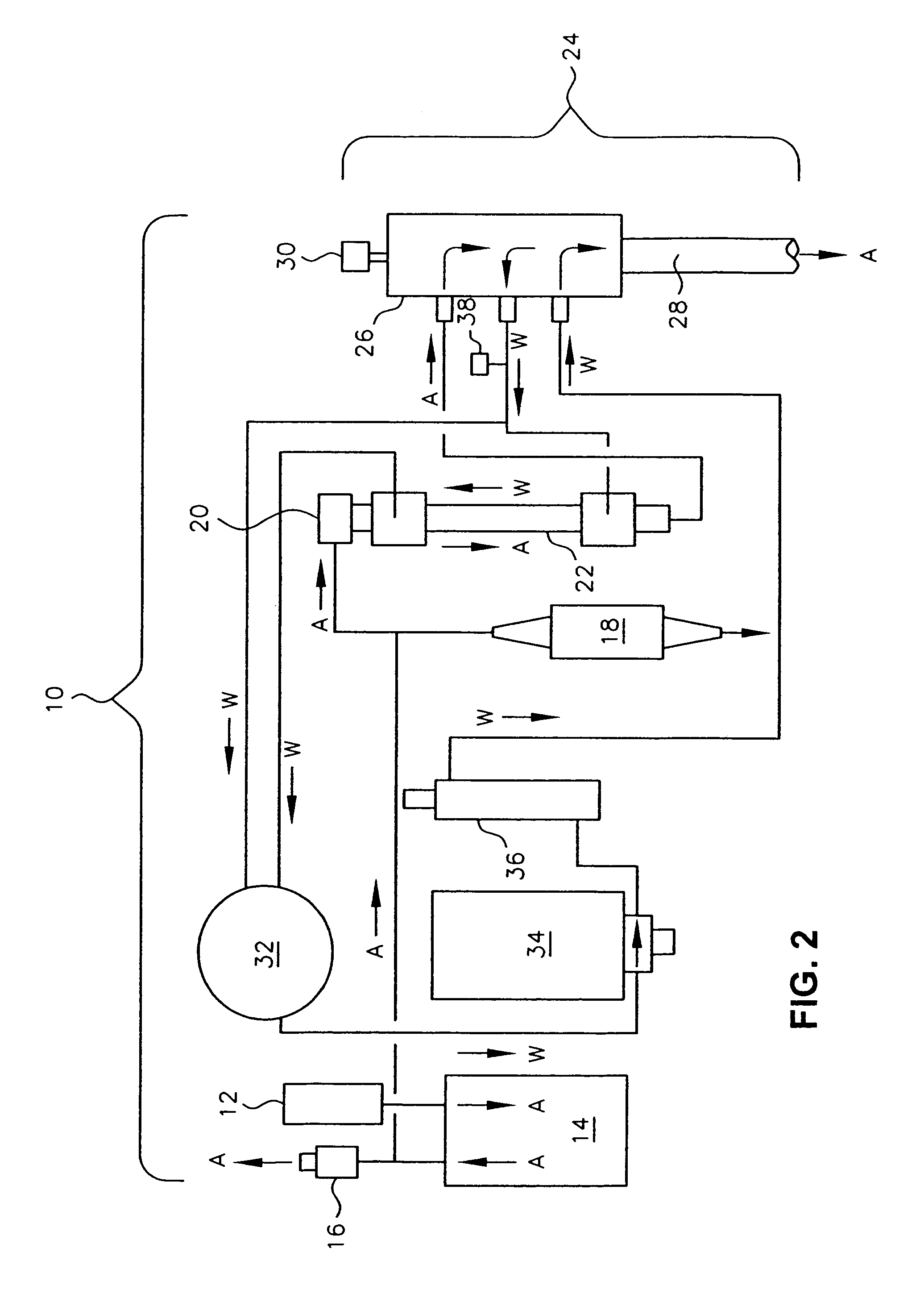Apparatus and method for respiratory tract therapy
a technology of respiratory tract and apparatus, applied in the field of apparatus and respiratory tract therapy, can solve the problems of respiratory irritation and discomfort of patients, and achieve the effects of reducing breathing work, improving vocal function, and enhancing athletic performan
- Summary
- Abstract
- Description
- Claims
- Application Information
AI Technical Summary
Benefits of technology
Problems solved by technology
Method used
Image
Examples
example 1
[0222]An evaluation was conducted to determine the impact of breathing air at or above body temperature and saturated with water vapor on pulmonary function in asthmatics with rhinitis. Part of the bronchoconstriction occurring in asthmatics with rhinitis is believed to driven by a nasopulmonary reflex stimulated by cooling and drying of the nasal mucosa. Breathing warmed humidified air has been discovered to remove the stimuli of cold and dryness and remove or reduce this component of bronchoconstriction.
[0223]Asthmatic subjects studied in the evaluation had mild to moderate asthma, with Forced Expiratory Volume after one second (FEV1) between 45% and 75% normal at screening, were non-smokers and had no other diagnosed conditions, or their conditions were stable and controlled. Subjects were asked not to use asthma medication on the day of the study. Control subjects had normal pulmonary functions. All subjects were asked to fill in a rhinitis score questionnaire for 14 consecutive...
example 2
[0240]Ten (10) normal subjects and five (5) COPD patients were stedied.
[0241]For the normal subjects, work of breathing and respiratory responses to heated and humidified flow were measured. Specifically, flow from 0 to 25 liters per minute was administered to the normal subjects at rest and during exercise. The results are provided in FIGS. 43A and 43B.
[0242]The results that, at rest, the mean work of breathing was reduced progressively by increasing nasal flow. When nasal flow increased from 0 to 20 liters per minute, the mean work of breathing fell by 42%. The results indicate a preferred range of flow rates from about 15 to about 20 liters per minute.
[0243]In the same group of normal subjects, mean tidal volume (i.e., the volume of air per breath) increased about 52% from 0.42 liters to 0.64 liters as nasal flow increased from 0 to 25 liters per minute. The results indicated that minute volume (volume breathed per minute) did not change significantly. Nevertheless, it was discov...
example 3
[0266]Thirty patients were studied who were scheduled to undergo intra-abdominal surgical procedures. Exclusion criteria were preoperative fever (>38 C), history of hypo- or hyperthyroidism, and significant cardiac disease by history.
[0267]Intraoperatively, patients received a balanced general anesthetic consisting of thiopental, fentanyl and / or hydromorphone, rocuronium or pancuronium, and isoflurane or desflurane. All intravenous fluids were prewarmed to between 37 C and 38 C. Intraoperatively, one layer of surgical drapes and one layer of cotton blankets were used to cover the patients, but no active warming measures (i.e. forced-air devices) were used.
[0268]Upon admission to the recovery room, patients were randomly assigned to receive either (1) anhydrous room temperature oxygen delivered at 4 L·min−1 by mask (control, n=15), or (2) warmed, humidified oxygen therapy at 20 L·min−1 (test, n=15). One layer of warmed cotton blankets was used to cover the patients but no other warmi...
PUM
 Login to View More
Login to View More Abstract
Description
Claims
Application Information
 Login to View More
Login to View More - R&D
- Intellectual Property
- Life Sciences
- Materials
- Tech Scout
- Unparalleled Data Quality
- Higher Quality Content
- 60% Fewer Hallucinations
Browse by: Latest US Patents, China's latest patents, Technical Efficacy Thesaurus, Application Domain, Technology Topic, Popular Technical Reports.
© 2025 PatSnap. All rights reserved.Legal|Privacy policy|Modern Slavery Act Transparency Statement|Sitemap|About US| Contact US: help@patsnap.com



